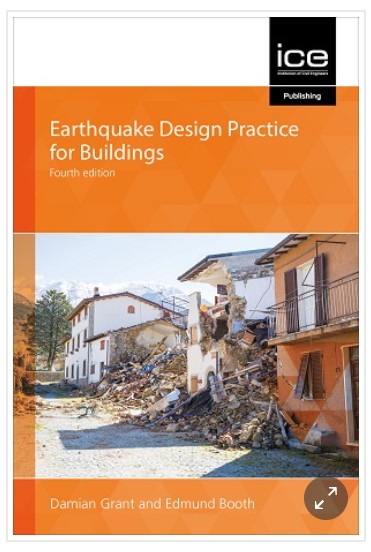Earthquake Design Practice for Buildings
The publication, Earthquake Design Practice for Buildings, is available from ICE Publishing in print and as an eBook. Published in 2020, the fourth edition includes extensive coverage of the principles and design rules that are used to create earthquake-resistant buildings in seismic areas of the world. It offers practical and easy to read advice on the technical issues that have to be considered in the seismic design of buildings.
This indispensable guide outlines the principles of structural dynamics used to establish how a building and its foundations respond to strong ground shaking. Extensive advice is provided on the choice and design of structural forms and materials which produce practical, affordable and attractive buildings resilient to earthquakes.
Containing information about international seismic standards, Earthquake Design Practice for Buildings is directed at practising engineers and advanced-level students seeking a broad survey of the latest developments in seismic engineering. It also appeals to those who have a sound general knowledge of structural design but who may be unfamiliar with the problems of providing earthquake resistance.
--The Institution of Civil Engineers
[edit] Related articles on Designing Buildings Wiki
- After Mexico - earthquakes and resilient cities.
- Earthquakes and the seismic strengthening of churches.
- Earthquake resistant building materials.
- Future proofing construction.
- ICE articles on Designing Buildings Wiki.
- Interferometric synthetic aperture radar InSAR.
- Managing and responding to disaster.
- Structural engineer.
- Structural principles.
- Types of structural load.
- Updated seismic hazard maps for the UK.
Featured articles and news
RTPI leader to become new CIOB Chief Executive Officer
Dr Victoria Hills MRTPI, FICE to take over after Caroline Gumble’s departure.
Social and affordable housing, a long term plan for delivery
The “Delivering a Decade of Renewal for Social and Affordable Housing” strategy sets out future path.
A change to adoptive architecture
Effects of global weather warming on architectural detailing, material choice and human interaction.
The proposed publicly owned and backed subsidiary of Homes England, to facilitate new homes.
How big is the problem and what can we do to mitigate the effects?
Overheating guidance and tools for building designers
A number of cool guides to help with the heat.
The UK's Modern Industrial Strategy: A 10 year plan
Previous consultation criticism, current key elements and general support with some persisting reservations.
Building Safety Regulator reforms
New roles, new staff and a new fast track service pave the way for a single construction regulator.
Architectural Technologist CPDs and Communications
CIAT CPD… and how you can do it!
Cooling centres and cool spaces
Managing extreme heat in cities by directing the public to places for heat stress relief and water sources.
Winter gardens: A brief history and warm variations
Extending the season with glass in different forms and terms.
Restoring Great Yarmouth's Winter Gardens
Transforming one of the least sustainable constructions imaginable.
Construction Skills Mission Board launch sector drive
Newly formed government and industry collaboration set strategy for recruiting an additional 100,000 construction workers a year.
New Architects Code comes into effect in September 2025
ARB Architects Code of Conduct and Practice available with ongoing consultation regarding guidance.
Welsh Skills Body (Medr) launches ambitious plan
The new skills body brings together funding and regulation of tertiary education and research for the devolved nation.
Paul Gandy FCIOB announced as next CIOB President
Former Tilbury Douglas CEO takes helm.
UK Infrastructure: A 10 Year Strategy. In brief with reactions
With the National Infrastructure and Service Transformation Authority (NISTA).
























